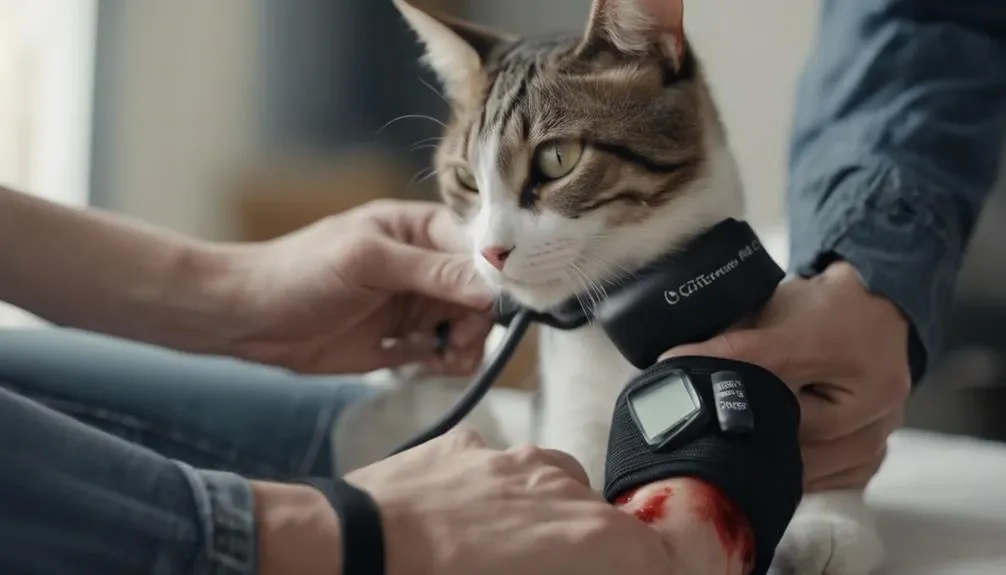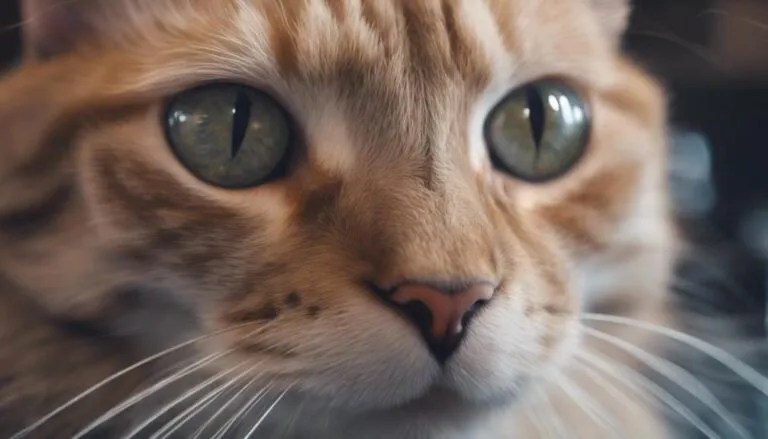The Best Fluffy Pancakes recipe you will fall in love with. Full of tips and tricks to help you make the best pancakes.

Imagine taking your cat's blood pressure is like mastering a delicate dance routine; it requires precision, focus, and practice.
But fear not, as with three easy steps, you can confidently navigate this essential aspect of your cat's healthcare.
By understanding the equipment, creating a serene setting, and maintaining a consistent approach, you'll be well on your way to pro-level blood pressure monitoring for your feline companion.
So, let's explore these steps together to ensure your cat's well-being is in good hands.
Key Takeaways
- Select a quiet environment for accurate readings.
- Position the cuff correctly for precise measurements.
- Analyze systolic and diastolic pressure for health assessment.
- Utilize oscillometric devices for reliable blood pressure monitoring.
Preparation for Blood Pressure Measurement
When preparing to measure your cat's blood pressure, select a quiet and calm room to minimize stress and movement during the process. Ensuring a tranquil environment will help keep your cat relaxed, leading to more accurate readings. Before starting, make sure your feline companion is comfortable and at ease. Utilize a high-definition oscillometric method for precise blood pressure measurements. This advanced technology guarantees detailed and reliable results, crucial for monitoring your cat's health effectively.
Properly positioning the cuff on your cat's limb or tail is essential. Follow the equipment guidelines to ensure accurate readings. Keeping detailed records of each blood pressure measurement session is vital. Note down the cuff size used, its placement, and any observations you make during the process. This information will be valuable for tracking changes in your cat's blood pressure over time and alerting you to any potential health concerns.
Technique for Taking Blood Pressure
To accurately measure your cat's blood pressure, ensure you use the high definition oscillometric method and position the cuff correctly on a limb or tail. Utilizing the correct technique is crucial for obtaining precise readings.
Here's how you can perform blood pressure measurement effectively:
- Blood Pressure Measurement: Employ the high definition oscillometric method for accurate results.
- Cuff Placement: Ensure the cuff is positioned correctly on a limb or tail.
- Equipment Calibration: Regularly check the calibration of your equipment to maintain accuracy.
- Documentation: Record essential details such as cuff site, size, and personnel present during the measurement process.
Interpreting Blood Pressure Results
Interpreting your cat's blood pressure results involves analyzing key components such as systolic pressure, which represents the pressure in the arteries when the heart contracts, and diastolic pressure, indicating the pressure when the heart is at rest between beats.
Mean arterial pressure (MAP), a calculated value reflecting the average pressure in the arteries during a cardiac cycle, and pulse pressure, the numerical difference between systolic and diastolic readings, are also crucial.
Understanding these components is essential for assessing cardiovascular health and detecting abnormalities promptly. Veterinary professionals rely on oscillometric devices to measure these parameters accurately.
A balanced blood pressure reading with appropriate systolic, diastolic, MAP, and pulse pressure values indicates good cardiovascular function. Deviations from these norms may signal underlying health issues that require further evaluation and intervention.
Frequently Asked Questions
How Can I Take My Cat's Blood Pressure at Home?
To take your cat's blood pressure at home, use a cat-specific cuff and ensure a calm environment. Place it on their front leg or tail as directed. Follow proper technique, record the results, and share with your vet for monitoring and care adjustments.
How Does a Veterinarian Take a Cat's Blood Pressure?
To take a cat's blood pressure, a veterinarian carefully handles the cat, uses Doppler technology with a probe on a peripheral artery, ensures accurate readings, interprets results, manages stress, maintains consistency in measurements, and provides follow-up care for the cat's cardiovascular health.
How Do You Take Blood Pressure Like a Pro?
To take blood pressure like a pro, use proper technique with high-definition equipment. Understand readings and handle stress for accurate results. Consistency is key, so practice regularly and monitor progress diligently.
What Is the Normal Blood Pressure for a Cat?
To determine the normal blood pressure for a cat, consider factors like breed, stress levels, health status, diet, exercise, age, and weight. Typically, a cat's blood pressure falls around 120 mmHg for systolic pressure.
Conclusion
In conclusion, by following the three easy steps outlined in this article, you can confidently and accurately take your cat's blood pressure like a pro.
Remember to prepare properly, use the correct technique, and interpret the results carefully to ensure your cat's health and well-being.
With patience and consistency, you can monitor your cat's blood pressure effectively and contribute to their overall wellness.








